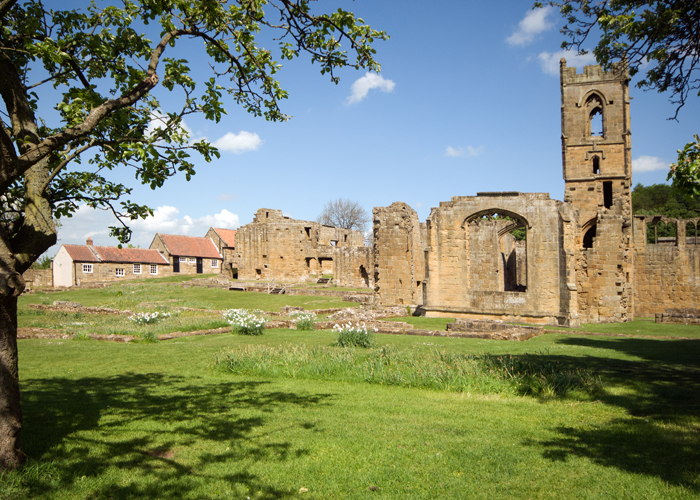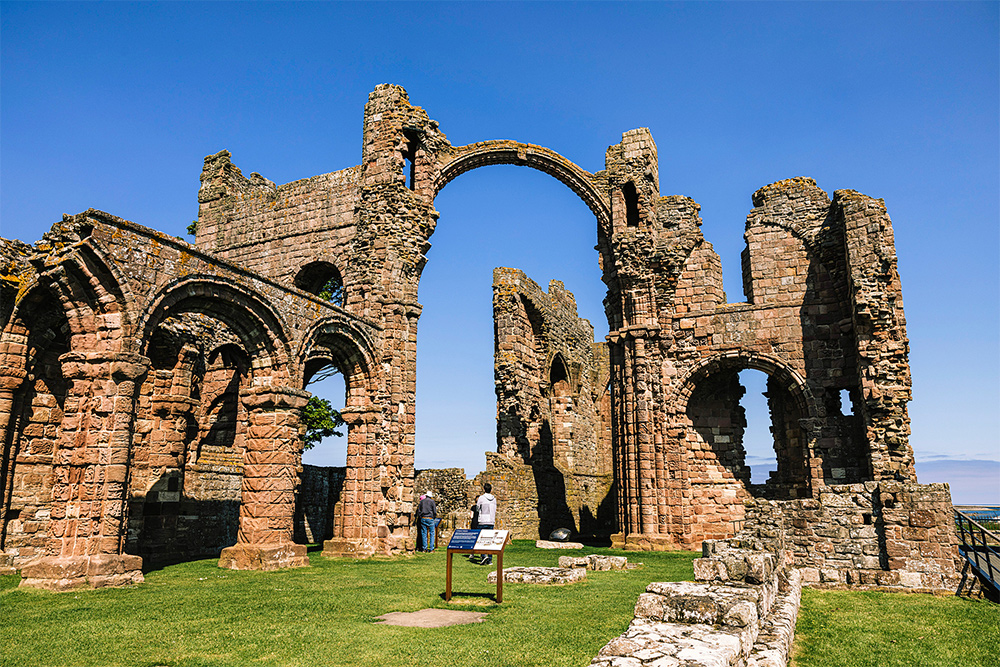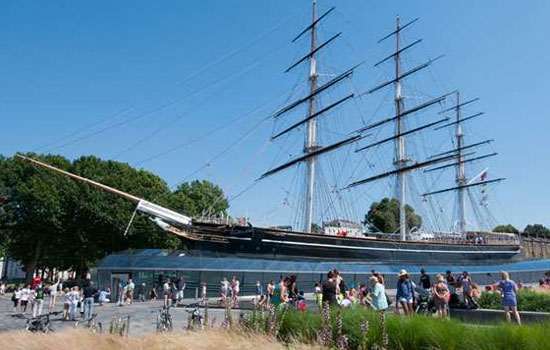
Abbeys and Priories quiz
Test your knowledge of abbeys and priories with our quiz. Click on each question to reveal the answer.
-
1. Which monastery in Canterbury was founded in 598?
Answer: St Augustine's Abbey
In 597 St Augustine landed in Kent on a mission to convert the pagan Anglo-Saxons to Christianity. The monastery he established in Canterbury a year later was initially dedicated to Saints Peter and Paul, but this was changed in 978 to include St Augustine.

-
2. Netley Abbey in Hampshire is the most complete example in southern England of an abbey built by which order of monks?
Answer: Cistercian monks
Peter des Roches, the Bishop of Winchester, founded the abbey in 1238, although he died before construction began. A colony of monks arrived from Beaulieu Abbey in 1239 and, when the abbey was complete, it was home to about 15 monks and 30 lay brothers, officials and servants.
-
3. Netley Abbey was the inspiration for which novel, published in 1817?
Answer: Northanger Abbey by Jane Austen
After the Suppression of the Monasteries, Sir William Paulet transformed the abbey into a mansion house, which was occupied until 1704. After the house was abandoned, it became overgrown with trees and ivy. Many authors and artists visited the romantic ruin, including Austen, the writer Thomas Gray and the painter John Constable.
-
4. Whitby Abbey in North Yorkshire was founded by St Hild of Whitby in about what year AD590, AD657, AD723, or AD861?
Answer: AD657
The abbey at Whitby (then known as Streaneshalch) was founded in 657 by Hild (614–80), who was the daughter of an Anglian nobleman, with the support of Oswiu (d670), king of Northumbria. It housed a community of monks and nuns and was the location in 664 for the Synod of Whitby, which decided the method of calculating the date of Easter that is still used today.
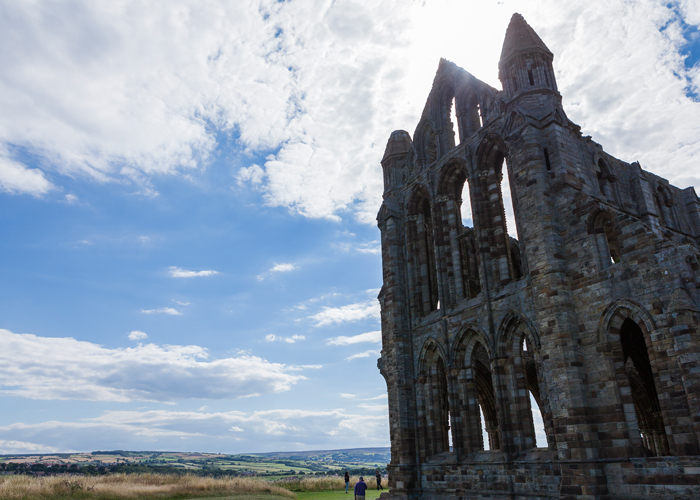
-
5. What caused considerable damage to Whitby Abbey in 1914?
Answer: The shelling of Whitby by the German High Seas Fleet
The west front of the abbey church was hit during the bombardment, causing much of it to collapse. However, the damage was later repaired using the original masonry.
-
6. Who said of Rievaulx Abbey in North Yorkshire that there was 'everywhere peace, everywhere serenity'?
Answer: St Aelred
St Aelred was Rievaulx Abbey's third abbot. Many of the abbey ruins that remain today date to Aelred's time as abbot between 1147–67, at which point the abbey housed a community of 650 monks, lay brothers and servants.
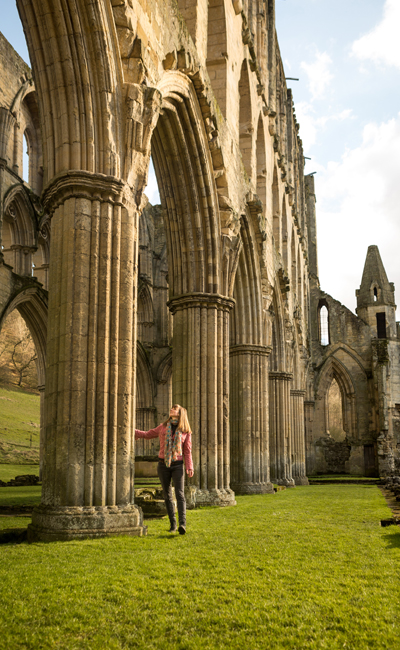
-
7. What happened to the abbot of St John's Abbey, Colchester, after the abbey refused to surrender to Henry VIII’s Commissioners during the Suppression?
Answer: He was executed for treason
At the Suppression (also known as the Dissolution of the Monasteries) under Henry VIII, most monasteries were rapidly reduced to ruins but occasionally some buildings were retained and put to other uses. In the case of St John's Abbey, the elaborate 15th-century gatehouse is now all that remains standing.
-
8. ANSWER
Answer: Lindisfarne Priory
Monks first came to the tidal island in AD635 but fled after a Viking raid in AD793. The ruins visible today date from the early 12th century.
-
9. Which part of Battle Abbey traditionally marks the spot where King Harold was killed in the Battle of Hastings?
Answer: The high altar
After William the Conqueror defeated Harold at the Battle of Hastings on 14 October 1066, he founded the abbey on the site of the battle as a memorial to those who died, to atone for the bloodshed and to commemorate his great victory. The way in which Harold died is still debated because various sources offer different accounts, from the celebrated 'arrow in the eye' to the more likely scenario of Harold being hacked down.
-
10. Can you name the Shropshire town, which has an Anglo-Saxon monastery, that was the home of Dr William Penny Brookes, who inspired the creation of the modern Olympics?
Answer: Much Wenlock
A monastery at Much Wenlock was first founded in about AD680. William Brookes (1809–95) founded the Wenlock Olympian Games, which first took place in October 1850 and were a major inspiration for the modern Olympics.
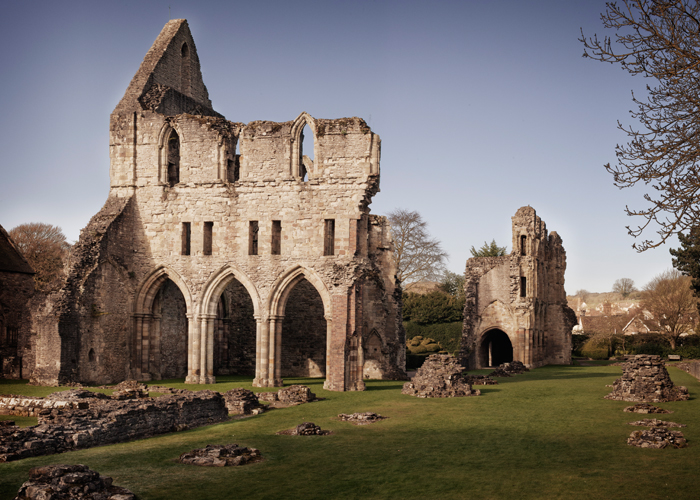
-
11. Which monastery in Norfolk provides evidence of the Cluniac monks' love of decoration?
Answer: Castle Acre Priory
Castle Acre Priory is one of the largest and best preserved monastic sites in England. It dates back to 1081 and is part of a rare survival of a Norman planned settlement, including a castle, village and parish church.
-
12. Why did Hailes Abbey in Gloucestershire become one of the most significant pilgrimage sites in medieval England?
Answer: It had a relic consisting of what was believed to be a portion of the blood shed by Christ on the Cross
Hailes Abbey received the relic in 1270 and it was mentioned in The Pardoner's Tale by Chaucer, part of The Canterbury Tales. As a result of the Suppression, the shrine to the Holy Blood was destroyed and the abbey fell into ruin.
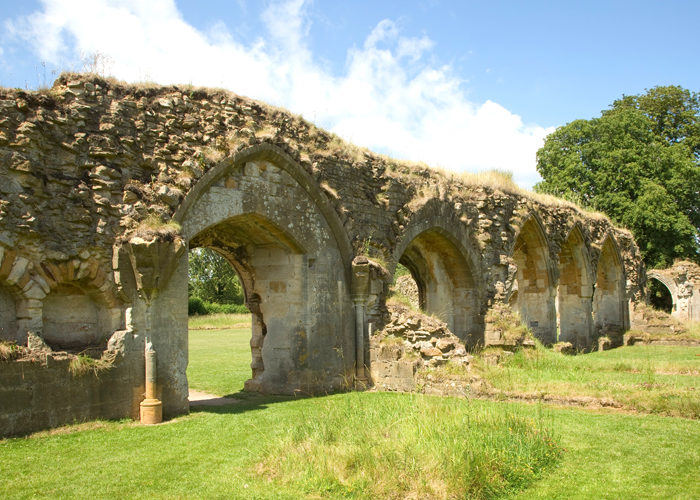
-
13. How did Thornton Abbey in North Lincolnshire survive the Suppression?
Answer: It was transformed into what’s called a collegiate foundation, where a community of priests would sing masses for the souls of benefactors
Thornton Abbey was one of Britain's richest Augustinian monasteries. The college was closed in 1547. A house was built behind the impressive gatehouse in the 17th century but was either dismantled or never completed.
-
14. The architecture of which Cistercian abbey may have inspired the design of the rose window at York Minster?
Answer: Byland Abbey in North Yorkshire
Byland Abbey is an outstanding example of early Gothic architecture and it became one of the largest monasteries of the Cistercian order in Britain. The remains of the buildings are important evidence of the development of northern monastic architecture between the late 12th and late 15th centuries.
-
15. Lilleshall Abbey in Shropshire twice entertained which king in about 1240?
Answer: Henry III
During the 13th-century, Lilleshall enjoyed great prestige. Sources of the abbey’s income included gifts and legacies, farmland, two watermills and investments in property, as well as tolls for the use of the Atcham Bridge over the River Severn.
-
16. Why were canons (priests who lived a communal life according to a monastic rule) who were part of the Premonstratensian order known as 'white canons'?
Answer: Because of their white woollen habits
The Premonstratensian Order was founded by St Norbert at Prémontré in northern France in 1120. There were 32 religious houses in Britain of the Premonstratensian order of canons, including Shap Abbey in Cumbria, Easby Abbey in North Yorkshire, Egglestone Abbey in County Durham, and Titchfield Abbey in Hampshire.
-
17. What was the name of the northern rebellion against Henry VIII that took place during the early stages of the Suppression?
Answer: The Pilgrimage of Grace
The Pilgrimage of Grace, a rising of England's northern counties, took place in 1536. As part of the rebellion, the lawyer Robert Aske took York and was supported by around 30,000 armed men, but ultimately the uprising achieved nothing and Aske was executed.
-
18. Which abbey in Surrey has been used as a backdrop in the films Elizabeth (1998) and Disney's Into the Woods (2014)?
Answer: Waverley Abbey
Waverley Abbey was the first monastery founded in Britain by the reforming Cistercian order when a small group of monks from France settled in this quiet spot by the River Wey in 1128. The impressive remains include the fine 13th-century vaulted refectory and the lay brothers' quarters, at the far end of the site.
-
19. The gardens of which North Yorkshire priory were recently renovated under the direction of garden designer Chris Beardshaw?
Answer: Mount Grace Priory, House and Gardens
A major project to give Mount Grace Priory – one of the best surviving examples of a Carthusian priory in England – a new lease of life took place during the winter of 2017–18. Chris Beardshaw used his expertise to create a design that brought the Arts and Crafts style of the manor house out into the garden.
